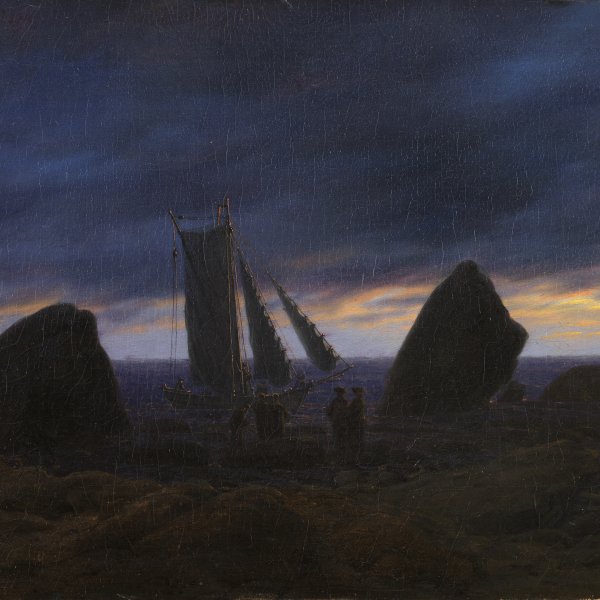Oaks beside the Water
1832
Oil on canvas.
71 x 100.5 cm
Museo Nacional Thyssen-Bornemisza, Madrid
Inv. no.
292
(1985.18
)
ROOM 29
Level 2
Permanent Collection
Born in Hamburg, Christian E. B.Morgenstern was an important landscape painter who spent most of life and career in Munich. Morgenstern was from a family of artists and his father, Johann Heinrich, was a miniature painter and portraitist, although Morgenstern did not pursue these fields of art. He trained in the studio of the painter Siegfried Bendixen in Hamburg, leaving there in 1824 to move to Copenhagen, from where he visited Sweden and Norway. In Denmark Morgenstern made contact with the new generations of painters interested in a direct exploration of nature. In 1829 the artist moved to Munich where he became a member of the Academy in 1842 although he exhibited in its Salons from as early as 1825, as well as in the Salons of other major German cities. With regard to landscape, Morgenstern can be considered an important artist who opened up new directions and themes. He produced plein-air watercolours and focused his attentions on atmospheric phenomena such as mist, soft rain, dusk and landscapes illuminated by moonlight. In addition, he deployed a distinctive and heavily charged brushstroke that became increasingly free and loose. Morgenstern’s compositions also reveal an early
Romantic approach, devoid of a highly realistic focus but imbued with a subjectivism and emotional charge that conveyed the grandeur of nature in his broad, sweeping panoramas. One of his most important early compositions is the oil on canvas entitled Mountain View in the Kunsthalle, Hamburg, dated to 1829, in which the artist depicts the slopes of a rocky peak.
Oaks beside the Water was acquired by Hans Henrich Thyssen-Bornemisza from the Nathan gallery in Zurich in 1985. The painting had previously been with the Messine gallery in Paris and in two private collections, one in France and the other in Switzerland. The canvas, which is signed and dated 1832, is an early work dating from Morgenstern’s first years of professional activity in Munich. It reflects the detailed study that the artist had made of 17th century Dutch landscape painters. The composition is inspired by these classical views and includes motifs characteristic of woodland landscape such as bare, twisted branches and massive roots, here located on the left at the water’s edge. The tree stumps on the right, as well as the study of light that filters between the clouds and gleams brightly in the background, recall Dutch landscape painting, as does the composition and structure of the present work. Using a high viewpoint Morgenstern leads the eye into the natural scene through the placid waters of a river that twists and turns before losing itself in the background the foliage. The manner of applying the brushstroke and the colour range, particularly the surface of the water that intensely reflects the sky, conform to the Romantic sensibility to landscape and to the date at which this work was executed.
The Hamburg Kunsthalle has a drawing for the oak trees on the left.
Mar Borobia
Oaks beside the Water was acquired by Hans Henrich Thyssen-Bornemisza from the Nathan gallery in Zurich in 1985. The painting had previously been with the Messine gallery in Paris and in two private collections, one in France and the other in Switzerland. The canvas, which is signed and dated 1832, is an early work dating from Morgenstern’s first years of professional activity in Munich. It reflects the detailed study that the artist had made of 17th century Dutch landscape painters. The composition is inspired by these classical views and includes motifs characteristic of woodland landscape such as bare, twisted branches and massive roots, here located on the left at the water’s edge. The tree stumps on the right, as well as the study of light that filters between the clouds and gleams brightly in the background, recall Dutch landscape painting, as does the composition and structure of the present work. Using a high viewpoint Morgenstern leads the eye into the natural scene through the placid waters of a river that twists and turns before losing itself in the background the foliage. The manner of applying the brushstroke and the colour range, particularly the surface of the water that intensely reflects the sky, conform to the Romantic sensibility to landscape and to the date at which this work was executed.
The Hamburg Kunsthalle has a drawing for the oak trees on the left.
Mar Borobia







